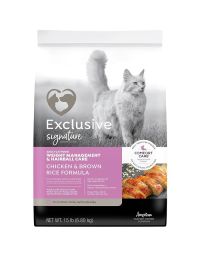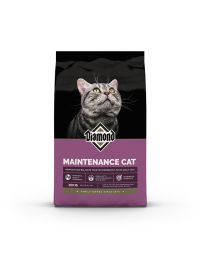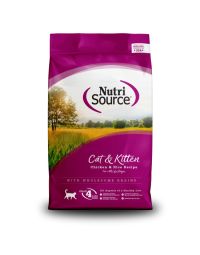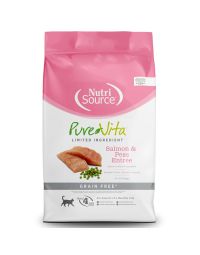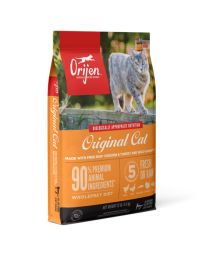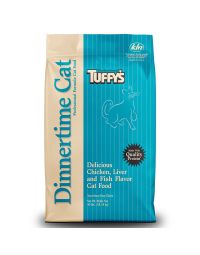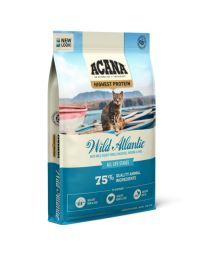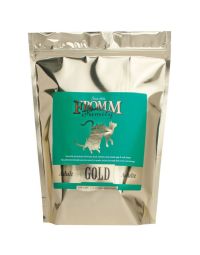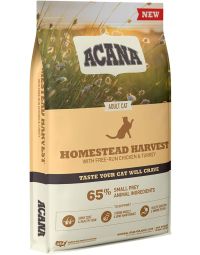Feeding your cat is simply a part of your daily routine, but did you know that some of us maybe aren’t doing it in the best way possible? Talk to your vet about what foods and amounts they recommend for your individual cat, as their health history might affect this.
There are a few very important things to remember to incorporate into your feline feeding routine. Make sure you are regularly cleaning your cats’ bowls which prevents bacterial buildup. This also includes their food storage container, which should be cleaned before being refilled. And lastly always provide water for meals, and a water source that is always available.
For starters, cats need a kibble with at least 26% protein, but more than that is optimal, especially for kittens or mother cats. This ensures they get enough protein to sustain an active and healthy lifestyle. In fact, studies have shown that felines who are not eating enough protein can lose muscle mass over time. Protein from animal sources is best suited for a cat’s digestive system and tends to be a more complete protein than that from plant sources. This means cats can meet all their amino acid needs with an animal protein compared to a plant source.
Next, look for fats and oils that come from animals. Cats can better utilize animal-based fats, and cats need these omega-3 and omega-6 fatty acids, as they provide energy, regulate inflammation, aid in fat-soluble vitamin absorption, affect their skin and coat health, and more. Ideally, fat should make up at least 9% of dry matter in cat food.
Finally, ensure the cat food has adequate fiber. For most cat foods this is about 5-6% fiber on a dry matter basis. Too much or too little can lead to various problems, such as loose stools or irregularity, so it’s important to stay within this range. Spikes and Houles carries multiple brands of cat food, browse all here.
When you’re coming up with a feeding schedule, it’s important to understand why cats eat the way they do. In the wild, cats eat sporadic meals, depending on when they catch food and often don’t know when their next meal will come. While your domestic cat might know the food will always be there, some can’t help but gorge themselves like they’re at an all-you-can-eat buffet. Before long, these additional calories can lead to a cat putting on weight and potentially becoming obese, which can lead to numerous other health problems.
Read our guide to the 3 methods of feeding cats, for a more expansive look at creating a routine.
As cats grow & develop their diet will change... here are the basics. Feeding kittens. Young kittens need to eat frequently. Although they need relatively large quantities of food because they are growing rapidly, they have limited space in their tiny stomachs. At eight weeks of age, they need to be fed about 5 meals a day.
By 6 months, the need for food has decreased as kittens are about 75% of their adult size and can be fed 2 meals a day. A good quality kitten food has advantages over adult cat food since it has been specially formulated for a kitten's demanding nutritional requirements. Because of their rapid growth, any nutritional mistakes made during kittenhood will have severe, even irreversible, consequences. For most kittens, growth is almost complete by six months of age. Adult cat food can be introduced at about 8-10 months of age.
Feeding the adult cat. A high-quality commercial adult cat food should always be fed because these diets have been specially formulated to contain all the nutrients that a cat requires. Dry or wet food can be used. Care should be taken to feed the correct amount, especially when feeding canned diets since it is easy to overfeed a cat. Once a cat becomes overweight or obese, it is much harder to lose excess weight than it is to prevent them from becoming overweight in the first place. Many owners prefer to feed small meals of moist food once or twice a day and provide dry food in between canned portions. This is fine if you ensure your cat receives the proper number of calories and gets enough physical activity. However, many cats receive too many calories and because they do not get enough physical activity, grazing or free feeding is not recommended.
Spikes and Houles experts are always available to help, but your veterinary health care team should be the first resource for questions and concerns. They can help you interpret the information, based on scientific principles, and can help you choose a diet that meets your cat's specific needs. When you have questions about a particular food or food ingredient, your best source of help is your professional veterinary health care providers.

